I threw up this morning and I have a fever. I feel like hell on this hike, but I’m not confessing my condition. We are backpacking fish to a high mountain lake in Idaho and I don’t want to miss out on what’s at the top.
“These high elevation lakes are pretty spectacular. Lots of rocky bluffs and real pretty water,” says Dan Garren, Idaho Department of Fish and Game regional fisheries manager. “Most of these are hard to get to so when you finally see one, it’s really nice. You change from hustle, hustle, get there to yes, we made it.”
The trail is empty of traffic because it’s full of elevation gain. The hike to Brockie Lake has few switchbacks. The quad-killing climb is only a mile and a half, but it’s pretty much straight up from 8,000 feet to 10,000 feet. Now pack on an extra 30 pounds of water weight and those quads are begging for collapse before the lake is in sight, but turning back is not an option. The cargo only has a five-hour survival window.
“The fish have to come with water and water is pretty heavy,” Garren says. “We have heavy packs and a lot of elevation gain. It can be a little difficult and the longer they stay in the bag, the higher the mortality.”
Two backpacking biologists, Garren and Greg Schoby, are hauling 1,500 baby cutthroat trout from Henry’s Lake to Brockie Lake. It’s one of several hundred high mountain lakes stocked statewide. Stocking by foot rather than by plane gives the biologists a chance to survey fishery progress with a rod, but we have to get there first.

“The cool thing about these mountain lakes is they just don’t get the pressure,” Garren says. “It takes a special kind of angler to come up here.”
I’m not feeling special. When I slow halfway up the trail, I say my back needs a break from carrying camera gear, but really I just need to bend over in the bushes and puke where no one can see. I give it a go aimed at the dirt. Nothing comes out. Dry heave. Keep hiking.
The single track we are following is narrow and steep. It’s best to plow forward with fish sloshing around in bags full of oxygen and three gallons of water. The breaks are short. The hours are long. The lake is a blessing for sore backs coming over the last rise.
“Even if you get to a high mountain lake and don’t catch fish, you have fantastic scenery,” Garren says. “That’s worth it in and of itself.”

The bags of fish are carefully placed in shallow water so the fish can acclimate. While water temperatures mingle in and out of the bags, Garren checks the lake for signs of camper traffic before casting a line to check on the size of fish stocked three years ago. High mountain lakes have a catch rate of one fish per hour, but many of them actually have much better odds than that. Garren catches and releases six 12” trout in 15 minutes. I catch one, land it and it leaves me quick. Guess it didn’t like my barf-breath scent.
We cut slits in the bags and watch new fish slip out. They swim into small rocky pockets to get their bearings before moving into their new waterfront property perched high out of reach for all but the hardiest of anglers. Given my sickly condition during this mountaintop trip, I consider myself one of the hardiest.


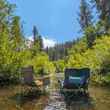

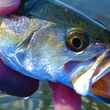
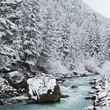





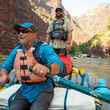
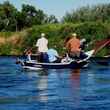

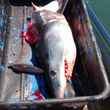
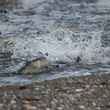
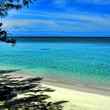



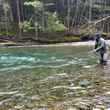
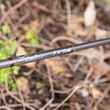


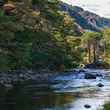
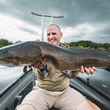
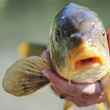
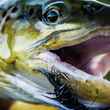
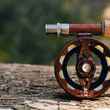

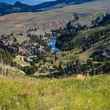
Comments
Antonio Pabon replied on Permalink
Wow! I started fly fishing when was a kid. I grew up in Chicago and taught my self to cast. I also taught myself to tie flies. I used to read field and stream and whatever I could find on fly fishing. This article reminded me of all the stories I read about stocking by horse back, truck, Helocopter,air plane and now hiking. I grew up and I still chase those trout with the dry fly! Your story was great. I wish I was college age again working such a job. Back packing and exploring all the while restablishing the true American trout! I used to dream but now it's all memories and nostalgia! Thanks
Larry Robinson replied on Permalink
Interesting article. I'm wondering how old the previous commenter is. I'm 75+ and just went in and out of Bernard. Because of the burn area it resides in, it is definitely one of the more brutal hikes to take on. What I would say about age is; that if you don't keep at it in spite of the pains, you will get to where you can't do it. Also...
George Bogdan used to do much the same thing with F&G carrying gear, etc, with his goats. Why don't F&G still use the services of the goatpackers that are out there?
Sage replied on Permalink
Why not use horses or mules?
Steve Z replied on Permalink
It's not the quads that kill me on these hikes, it's the lack of oxygen. Living at sea level makes the transition killer. Great story!
Pages